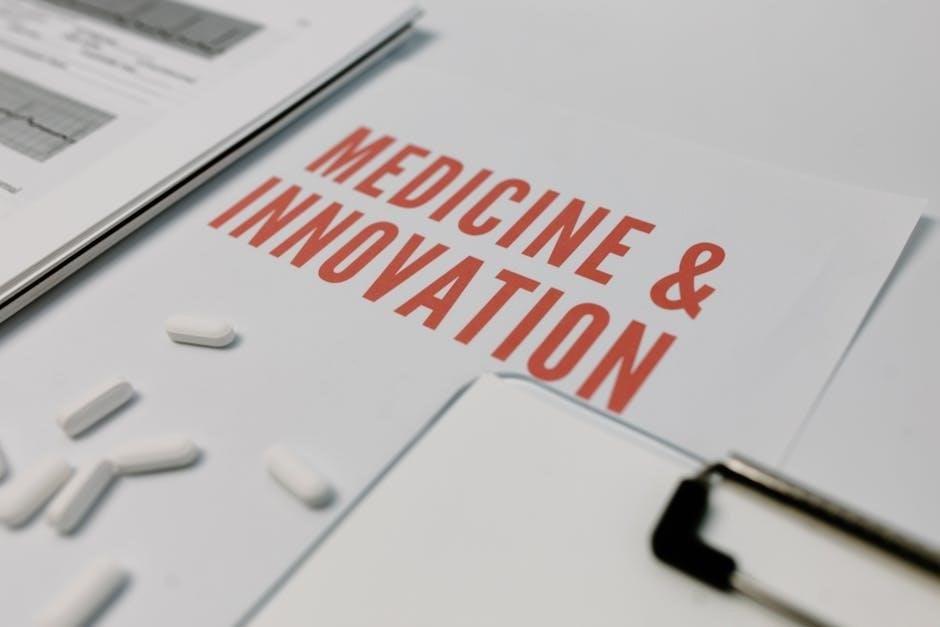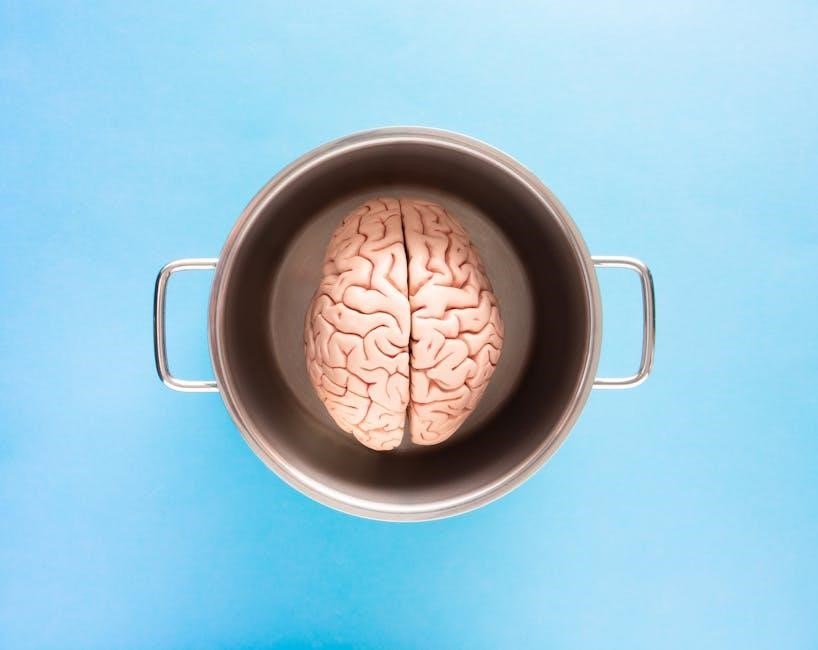100 concepts anatomy pdf

Anatomical understanding forms the bedrock of numerous disciplines. It is essential, providing a crucial foundation for healthcare, art, and fitness, enabling informed practice and deeper insights.
What is Anatomy?
Anatomy, at its core, is the science that explores the structure of living organisms. It delves into the intricate organization of bodies, examining everything from the macroscopic—organs and bones visible to the naked eye—to the microscopic—cells and tissues requiring magnification. This discipline seeks to understand the physical components of life, meticulously cataloging and describing their arrangement.
Anatomy’s scope extends beyond mere description. It investigates the relationships between different structures, how they interact, and how their form relates to their function. This understanding is vital for comprehending the mechanisms of life, from the simple movement of a muscle to the complex processing of information in the brain.
Historically, anatomy relied heavily on dissection. Modern techniques, however, incorporate imaging technologies like MRI and CT scans, providing non-invasive ways to explore the body’s interior. This blend of traditional and modern approaches makes anatomy a dynamic and continuously evolving field.
Why Learn Anatomy?
Learning anatomy provides a fundamental understanding of the human body. This knowledge is beneficial across various fields, enhancing professional skills and personal understanding significantly.
3.1. For Medical Professionals
For medical professionals, a thorough understanding of anatomy is absolutely paramount. It forms the cornerstone of accurate diagnosis, effective treatment planning, and successful surgical interventions. Doctors, nurses, physician assistants, and other healthcare providers rely on anatomical knowledge daily to navigate the complexities of the human body. Knowing the precise location of organs, vessels, and nerves is critical when interpreting medical imaging, performing physical examinations, and administering medications.
Without a solid grasp of anatomy, medical professionals risk misdiagnosing conditions, causing iatrogenic injuries during procedures, and ultimately compromising patient care. Anatomy education enables healthcare providers to visualize the internal structures of the body, understand the relationships between different anatomical components, and predict how disease processes might affect these structures. The study of anatomy is a continuous process, requiring ongoing review and refinement to keep pace with advancements in medical knowledge and technology.
3.2. For Artists
Anatomy is not just for doctors; it’s also a powerful tool for artists seeking to represent the human form with accuracy and expressiveness. A deep understanding of skeletal structure, musculature, and surface anatomy allows artists to create realistic and dynamic depictions of the human body in various poses and actions. By studying anatomy, artists can move beyond mere imitation and gain a profound understanding of how the body moves, how muscles contract, and how weight is distributed;
This knowledge enables them to create figures that are not only anatomically correct but also imbued with a sense of life and vitality. Whether sculpting, painting, or drawing, a solid foundation in anatomy empowers artists to capture the essence of the human form, conveying emotion, movement, and character with greater precision and artistry. Understanding anatomy allows artists to make informed decisions about proportion, gesture, and composition, elevating their work to new levels of realism and expressiveness.
3.3. For Fitness Enthusiasts
For fitness enthusiasts, understanding anatomy transcends mere aesthetics; it’s about optimizing performance and preventing injuries. Knowledge of muscle groups, their origins, insertions, and actions, allows for targeted training, maximizing gains while minimizing the risk of strain. Understanding joint mechanics and biomechanics enables informed exercise selection and proper form, ensuring movements are executed safely and effectively.
By grasping how different muscles work together, fitness enthusiasts can design well-rounded training programs that promote balanced development and functional strength. Moreover, anatomical knowledge is crucial for identifying potential weaknesses or imbalances that could lead to injuries. A solid grounding in anatomy empowers fitness enthusiasts to listen to their bodies, understand pain signals, and make informed decisions about training intensity and recovery, ultimately leading to a healthier and more sustainable fitness journey. This knowledge is a powerful tool for achieving fitness goals safely and efficiently.

Key Concepts in Anatomy
Anatomy relies on specific terminology, directional planes, and an understanding of body systems. Mastering these core concepts provides a framework for comprehending the human form.
4.1. Anatomical Terminology
Understanding anatomical terminology is paramount for effectively communicating about the human body. This specialized vocabulary provides a precise and universally understood method for describing the location, direction, and relationships of anatomical structures. Without a solid grasp of these terms, accurately interpreting anatomical texts, diagrams, and clinical reports becomes significantly challenging.
Anatomical terms offer a standardized language, preventing ambiguity and ensuring clarity in scientific and medical contexts. For example, instead of saying “the structure near the head,” we use “superior” or “cranial” to indicate its position relative to other body parts. Similarly, “medial” and “lateral” describe positions closer to or further from the midline of the body, respectively.
Mastering these terms involves learning prefixes, suffixes, and root words commonly used to construct anatomical descriptions. This knowledge facilitates the comprehension of complex anatomical relationships and processes. It enables healthcare professionals, students, and researchers to communicate effectively and avoid potentially dangerous misunderstandings. Therefore, dedicating time to learning anatomical terminology is a crucial investment for anyone studying or working with the human body.
4.2. Planes of the Body
To visualize and understand the internal organization of the human body, we use anatomical planes. These imaginary flat surfaces divide the body into sections, providing a framework for describing the location and orientation of structures. The three primary planes are the sagittal, coronal (or frontal), and transverse (or horizontal) planes.
The sagittal plane divides the body into right and left sections. If the division is equal, creating mirror images, it’s called the midsagittal plane. The coronal plane divides the body into anterior (front) and posterior (back) sections. Finally, the transverse plane divides the body into superior (upper) and inferior (lower) sections.
Understanding these planes is crucial for interpreting medical imaging, such as CT scans and MRIs. These imaging techniques produce cross-sectional images that correspond to the anatomical planes. By knowing how these planes relate to the body’s overall structure, we can accurately identify and locate organs, tissues, and any abnormalities that may be present. Furthermore, these planes are fundamental in describing movements and spatial relationships within the body, making them essential for anatomy students and healthcare professionals alike.
4.3. Body Systems
The human body is a complex organism composed of numerous interconnected systems, each performing specialized functions essential for life. These systems work together in a coordinated manner to maintain homeostasis, the stable internal environment necessary for survival. Understanding these systems is fundamental to comprehending anatomy and physiology.
Key body systems include the skeletal, muscular, nervous, endocrine, cardiovascular, lymphatic, respiratory, digestive, urinary, and reproductive systems. The skeletal system provides structural support and protection, while the muscular system enables movement. The nervous system controls and coordinates bodily functions, and the endocrine system regulates hormones. The cardiovascular system transports blood, oxygen, and nutrients, and the lymphatic system plays a role in immunity. The respiratory system facilitates gas exchange, the digestive system breaks down food, the urinary system eliminates waste, and the reproductive system enables procreation.
Each system is composed of specific organs, tissues, and cells that work together to perform its designated tasks. Studying these systems individually and collectively provides a comprehensive understanding of human anatomy and its functional implications.
100 Concepts Anatomy PDF: A Comprehensive Resource
The “100 Concepts Anatomy PDF” is designed as an accessible entry point into the vast world of human anatomy. It’s carefully structured to introduce essential anatomical principles in a digestible format. This resource aims to simplify the learning process, focusing on the core concepts necessary for a foundational understanding.
The PDF serves as a valuable tool for students, artists, and anyone interested in learning about the human body. By distilling complex anatomical information into 100 key concepts, it provides a clear and concise overview. This approach enables learners to grasp the fundamental building blocks of anatomy without feeling overwhelmed by excessive detail.
The document covers a broad range of topics, from skeletal structures to muscular systems, and from neurological pathways to cardiovascular functions. Each concept is explained with clarity, often accompanied by illustrative diagrams to enhance comprehension. It’s an ideal starting point for anyone embarking on their anatomical journey.
Exploring the Contents of the PDF
The “100 Concepts Anatomy PDF” is meticulously organized to facilitate a progressive understanding of the human body. The content is strategically divided into sections, each addressing a specific area of anatomical study. You’ll find dedicated segments covering the skeletal system, detailing bone structures and their articulations.
The muscular system is thoroughly explored, outlining major muscles, their origins, insertions, and functions. The PDF also delves into the intricacies of the nervous system, mapping out key neural pathways and brain regions. Furthermore, it elucidates the cardiovascular system, tracing blood flow and cardiac function.
Each concept is presented with supporting visuals, aiding in spatial understanding and retention. The PDF also includes concise definitions and explanations, ensuring clarity and ease of learning. By systematically breaking down the complexities of anatomy, the PDF offers a user-friendly guide to the human body’s intricate design.
How to Effectively Use the PDF for Learning
To maximize the benefits of the “100 Concepts Anatomy PDF,” adopt a structured approach. Begin by reviewing the introductory sections to establish a foundational understanding. Then, proceed sequentially through the concepts, focusing on one section at a time. Actively engage with the material by highlighting key terms and annotating diagrams.
Test your comprehension regularly by attempting the practice questions provided within the PDF. Supplement your learning by creating flashcards for anatomical terms and structures. Visualize the concepts by drawing diagrams or using online 3D models. Integrate the information with real-world examples to enhance retention.
Consider forming a study group to discuss challenging concepts and quiz each other. Review the material periodically to reinforce your understanding. By actively engaging with the PDF and employing diverse learning strategies, you can effectively master the complexities of anatomy.
Benefits of Using a PDF for Anatomy Study
Utilizing a PDF like the “100 Concepts Anatomy PDF” for studying offers numerous advantages. PDFs are easily accessible on various devices, providing flexibility for learning anytime, anywhere. They are often searchable, allowing you to quickly locate specific information. The format preserves the integrity of the content, ensuring consistent presentation across different platforms.
PDFs are cost-effective, eliminating the need for expensive textbooks. They can incorporate interactive elements, such as hyperlinks and embedded videos, enhancing the learning experience. The ability to annotate and highlight directly within the PDF facilitates active engagement with the material.
Furthermore, PDFs are easily shareable, enabling collaboration with peers and instructors. They contribute to a paperless learning environment, promoting sustainability. The concise and focused nature of the “100 Concepts Anatomy PDF” streamlines the learning process, making it an efficient and effective study tool.

Supplementing Your Learning with Other Resources
While the “100 Concepts Anatomy PDF” provides a solid foundation, supplementing your learning with diverse resources is crucial for comprehensive understanding. Consider utilizing interactive 3D anatomy software, such as Visible Body or Complete Anatomy, to visualize structures in detail. Online video platforms like YouTube and Khan Academy offer engaging explanations and dissections;
Anatomy atlases, such as Netter’s or Gray’s Anatomy, provide detailed illustrations and descriptions. Textbooks, while potentially more in-depth than the PDF, can offer alternative perspectives and expanded explanations. Attend anatomy workshops or lectures to benefit from expert instruction and hands-on experience.
Practice quizzes and flashcards are excellent for reinforcing knowledge and identifying areas needing further review. Collaborative study groups allow you to discuss concepts and learn from peers. Remember to tailor your supplementary resources to your individual learning style and specific needs for optimal results.

Common Challenges in Learning Anatomy and How to Overcome Them
Learning anatomy presents several common challenges. The sheer volume of information can feel overwhelming; break down the material into smaller, manageable chunks, focusing on one body system at a time; Anatomical terminology can be daunting; create flashcards and practice using the terms in context. Visualizing 3D structures from 2D images is difficult; utilize 3D models and online resources to enhance spatial understanding.
Memorizing muscle origins, insertions, and actions requires effort; use mnemonic devices and active recall techniques. Applying anatomical knowledge to clinical scenarios can be challenging; practice problem-solving and case studies. Procrastination is a common pitfall; establish a study schedule and stick to it. Lack of motivation can hinder progress; find a study partner or join a study group for support.
Don’t be afraid to ask for help from instructors or classmates. Embrace active learning strategies and seek out diverse resources to overcome these challenges and achieve success in anatomy.
Tips for Memorizing Anatomical Structures
Memorizing anatomical structures requires a strategic approach. Start with the big picture, understanding the overall organization of the body before delving into specific details. Utilize visual aids like diagrams, illustrations, and 3D models to create mental images of the structures. Break down complex structures into smaller, more manageable parts, focusing on their relationships to each other.
Employ mnemonic devices, acronyms, and rhymes to aid recall. For example, use “Some Lovers Try Positions That They Can’t Handle” to remember the carpal bones. Practice active recall by testing yourself frequently on the material. Use flashcards to quiz yourself on anatomical terms and locations. Teach the material to someone else, which reinforces your own understanding.
Relate anatomical structures to their functions, which provides context and makes them easier to remember. Study in a quiet, distraction-free environment. Get enough sleep and take regular breaks to avoid burnout. Be patient with yourself and celebrate your progress along the way. Repetition and consistent effort are key to mastering anatomical knowledge.

The Future of Anatomy Education
The future of anatomy education is poised for significant transformation, driven by technological advancements. Virtual reality (VR) and augmented reality (AR) are increasingly integrated, providing immersive and interactive learning experiences. Students can explore anatomical structures in 3D, manipulate them, and visualize their relationships in a dynamic way.
Artificial intelligence (AI) is being utilized to personalize learning, providing customized feedback and identifying areas where students need additional support. AI-powered tutors can answer questions, assess understanding, and adapt the curriculum to individual learning styles. Online resources, such as interactive atlases and virtual dissections, are becoming more prevalent, offering flexible and accessible learning options.
The focus is shifting towards active learning methodologies, emphasizing problem-solving, critical thinking, and collaboration. Students are encouraged to apply their anatomical knowledge to real-world scenarios, fostering a deeper understanding of its clinical relevance. Cadaver dissection remains a valuable component, but is often supplemented with digital resources to enhance the learning experience. The future promises a more engaging, personalized, and technologically advanced approach to anatomy education.